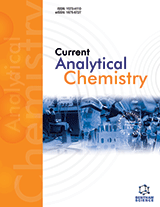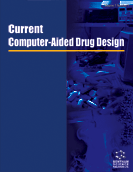Abstract
CORAL software (http://www.insilico.eu/coral/) has been used for modeling of carcinogenicity (logTD50) of 401 compounds, and anticancer activity (-logIC50) of 100 compounds, on the basis of quantitative structure – activity relationships (QSAR). The simplified molecular input line entry system (SMILES) was used for the representation of the molecular structures. A new additional global invariant of the molecular structure was tested. This is an indicator of the presence of pairs of chemical elements (F, Cl, Br, N, O, S, and P). Three random splits into sub-training, calibration, and test set were examined. Molecular features (calculated with SMILES and statistically significant), which increase the anticancer activity have been identified: their presence in the molecular structure could be helpful criterion in the search for new anticancer agents.
Keywords: artificial neural networks, anticancer activity, threshold, Carcinogenicity, QSAR, SMILES, Validation, CORAL software
Anti-Cancer Agents in Medicinal Chemistry
Title: SMILES-based QSAR Approaches for Carcinogenicity and Anticancer Activity: Comparison of Correlation Weights for Identical SMILES Attributes
Volume: 11 Issue: 10
Author(s): Andrey A. Toropov, Alla P. Toropova, Emilio Benfenati, Giuseppina Gini, Danuta Leszczynska and Jerzy Leszczynski
Affiliation:
Keywords: artificial neural networks, anticancer activity, threshold, Carcinogenicity, QSAR, SMILES, Validation, CORAL software
Abstract: CORAL software (http://www.insilico.eu/coral/) has been used for modeling of carcinogenicity (logTD50) of 401 compounds, and anticancer activity (-logIC50) of 100 compounds, on the basis of quantitative structure – activity relationships (QSAR). The simplified molecular input line entry system (SMILES) was used for the representation of the molecular structures. A new additional global invariant of the molecular structure was tested. This is an indicator of the presence of pairs of chemical elements (F, Cl, Br, N, O, S, and P). Three random splits into sub-training, calibration, and test set were examined. Molecular features (calculated with SMILES and statistically significant), which increase the anticancer activity have been identified: their presence in the molecular structure could be helpful criterion in the search for new anticancer agents.
Export Options
About this article
Cite this article as:
A. Toropov Andrey, P. Toropova Alla, Benfenati Emilio, Gini Giuseppina, Leszczynska Danuta and Leszczynski Jerzy, SMILES-based QSAR Approaches for Carcinogenicity and Anticancer Activity: Comparison of Correlation Weights for Identical SMILES Attributes, Anti-Cancer Agents in Medicinal Chemistry 2011; 11 (10) . https://dx.doi.org/10.2174/187152011797927625
| DOI https://dx.doi.org/10.2174/187152011797927625 |
Print ISSN 1871-5206 |
| Publisher Name Bentham Science Publisher |
Online ISSN 1875-5992 |
 14
14
- Author Guidelines
- Bentham Author Support Services (BASS)
- Graphical Abstracts
- Fabricating and Stating False Information
- Research Misconduct
- Post Publication Discussions and Corrections
- Publishing Ethics and Rectitude
- Increase Visibility of Your Article
- Archiving Policies
- Peer Review Workflow
- Order Your Article Before Print
- Promote Your Article
- Manuscript Transfer Facility
- Editorial Policies
- Allegations from Whistleblowers
Related Articles
-
Inhibition of Angiogenesis by Non-Steroidal Anti-Inflammatory Drugs: From the Bench to the Bedside and Back
Current Drug Targets - Inflammation & Allergy Bioinorganic Chemistry: The Study of the Fate of Platinum-Based Antitumour Drugs
Current Chemical Biology Lung Defence Mechanisms and Their Potential Role in the Prevention of Ventilator Associated Pneumonia
Current Respiratory Medicine Reviews Advances in Exploring the Role of Micrornas in Inflammatory Bowel Disease
MicroRNA Assessment of miR-212 and Other Biomarkers in the Diagnosis and Treatment of HBV-infection-related Liver Diseases
Current Drug Metabolism Editorial: [Hot Topic: Molecular Pathology in Therapeutics: Where are We Now, and Where are We Going?]
Current Drug Targets Challenges in the Discovery of Novel Therapeutic Agents in Cancer
Current Drug Metabolism Clinical Experiment of Mutant Herpes Simplex Virus HF10 Therapy for Cancer
Current Cancer Drug Targets The Application of DNA Microarrays to the Study of Cancer
Current Genomics The Relationship Between Social Support, Social Constraint, and Psychological Adjustment for Patients with Rare Autoimmune Disease
Current Rheumatology Reviews Medications not Intended for Treatment of Dyslipidemias and with a Variable Effect on Lipids
Current Pharmaceutical Design Natural Antioxidants: Therapeutic Prospects for Cancer and Neurological Diseases
Mini-Reviews in Medicinal Chemistry Biomedical Data Integration in Computational Drug Design and Bioinformatics
Current Computer-Aided Drug Design Transcatheter Embolization Therapy in Liver Cancer
Recent Patents on Medical Imaging Anti-Angiogenic Agents and Cancer: Current Insights and Future Perspectives
Recent Patents on Anti-Cancer Drug Discovery Targeting Transcription: A New Concept of Anti-Inflammatory Therapy of Airway Diseases
Current Drug Targets Flavonoids in Neurodegeneration: Limitations and Strategies to Cross CNS Barriers
Current Medicinal Chemistry Fine Tuning Therapeutic Targeting of the Sphingolipid Biosynthetic Pathway to Treat Atherosclerosis
Current Vascular Pharmacology Expression of P-gp, MRP, LRP, GST-π and TopoIIα and Acquired Resistance to Cisplatin in Human Lung Adenocarcinoma Cells
Letters in Drug Design & Discovery Tamoxifen in the Treatment of Hepatocellular Carcinoma: 5-Year Results of the CLIP-1 Multicentre Randomised Controlled Trial
Current Pharmaceutical Design


























